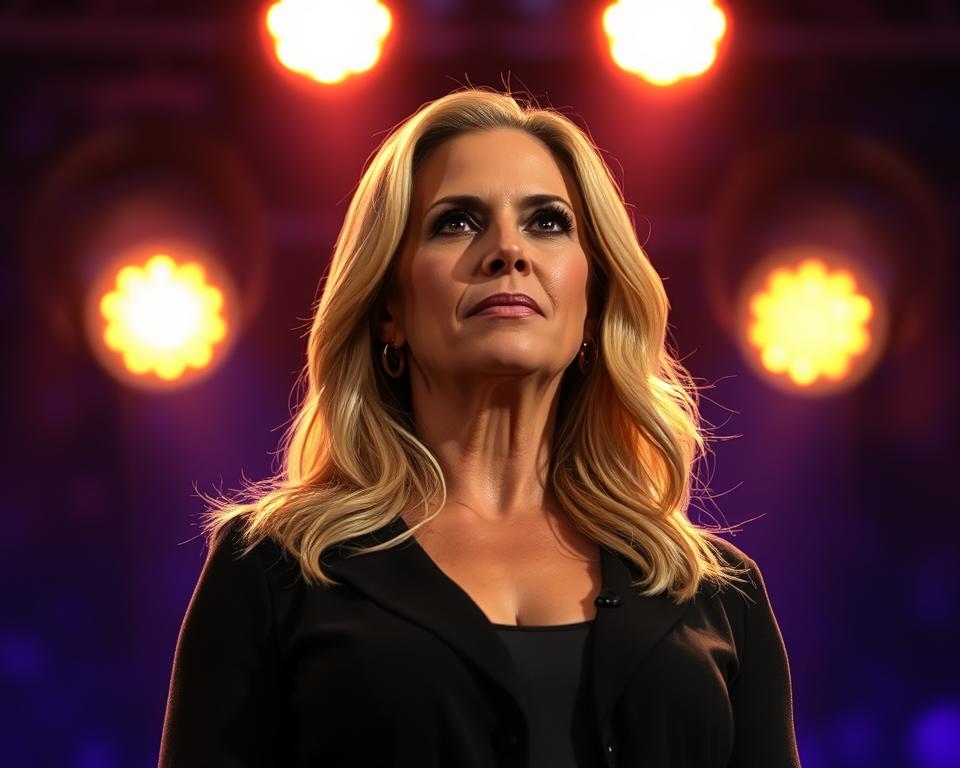When D’Angelo’s 2015 Second Coming tour kicked off, fans were excited. They wondered if this was the end of his mysterious break. Now, at the Southbank Centre’s Devil’s Pie screening, fans are reliving his journey.
From church choir boy to R&B icon, D’Angelo’s story is compelling. The documentary, directed by Carine Bijlsma, shows how his faith and music merged. This created hits like “Untitled (How Does It Feel),” changing his image overnight.
Devil’s Pie premiered on August 15, showing raw footage of D’Angelo’s 2015 shows and rare home videos. Questlove narrates, connecting D’Angelo’s Pentecostal roots to his music. He talks about how childhood trauma and his mother’s early death influenced his art.
Scenes of fans screaming during “Lady” mirror the excitement of modern comebacks. Like Aubrey O’Day’s Masked Singer reveal, D’Angelo’s return was significant. But his comeback carried deeper meaning.
D’Angelo stands at 5’6”, but his legacy is huge. With over 13 albums and tours, he bridged old soul and new R&B. Yet, he faced pressures that social media couldn’t fully show. Devil’s Pie asks: Can an artist disappear to find their soul, or does the world just stop listening?
The Early Years: How D’Angelo Found His Soul Voice
Michael Eugene Archer, known as D’Angelo, started singing in church choirs at age three. This was the start of his d’angelo music. Raised in Richmond, Virginia, his Pentecostal upbringing gave his voice raw emotion and spiritual depth.
This d’angelo biography shows how gospel harmonies and Sunday service rituals became his unique R&B and soul sound.
From Church Choir to R&B Pioneer
Church performances taught Archer discipline and range. By 12, he was leading choirs, his falsetto echoing gospel legends. Later, this training helped him mix sacred and secular tones.
“I couldn’t have done anything else,” he once said. His early work with hip-hop group IGU in the early ’90s connected Richmond’s underground scene with mainstream success.
Musical Influences That Shaped His Sound
Prince’s flamboyance and Marvin Gaye’s vulnerability shaped his style. Sessions with producers like Questlove added jazz improvisation to R&B. This created a sound that blended live instruments and soulful stories.
First Steps Into the Recording Industry
Discovered by executive Jocelyn Cooper, Archer signed to Elektra Records at 21. His early demos mixed hip-hop beats with church-inspired harmonies. This was a preview of d’angelo biography highlights like *Brown Sugar*.
These early years set the stage for an artist who would change neo-soul while keeping gospel’s spiritual essence.
Brown Sugar Breakthrough: D’Angelo’s Meteoric Rise to Fame
In 1995, D’Angelo’s debut album Brown Sugar changed R&B forever. It mixed soul, funk, and hip-hop in a new way. R&B’s evolution got a big boost from songs like Brown Sugar and the smooth Lady. Critics said it was a rebirth of real R&B.
The album hit #8 on the Billboard 200 and went platinum. D’Angelo’s d’angelo songs became hits for many. Songs like “Lady” showed off his skill on many instruments. “Cruisin'” mixed jazz and hip-hop in a unique way.
After the album, D’Angelo’s live shows and new singles made him even more famous.
People like Questlove said D’Angelo’s albums brought back real music. Even today, “Brown Sugar” is popular on streaming sites. It shows how timeless his music is. Critics say D’Angelo’s work inspires artists like H.E.R. and Daniel Caesar. But, there were also challenges that led to his disappearance.
The Untold Story Behind D’Angelo’s Voodoo Era
After the hit of Brown Sugar, D’Angelo went into Electric Lady Studios. There, he created Voodoo, a game-changer in d’angelo music. This album was made with a group of Black artists over three years.
It was inspired by the Soulquarians, a group that included Questlove, Erykah Badu, and J Dilla. “They took over the studio,” said one of the team members. They were all about making great music.
Creating a Neo-Soul Masterpiece
Engineers like Russell Elevado worked hard to get the sound just right. They used old tape to make it sound like classic soul records. The team worked together, with Questlove, The Roots’ drummer, often joining D’Angelo in the studio.
This mix of rock and funk made “Voodoo” special. It was a labor of love, made without shortcuts.
The “Untitled…” Video’s Impact
The video for “Untitled…” made D’Angelo a sex symbol. He later said it was both good and bad. Mark Jenkins helped him get in shape, but fans focused too much on the visuals.
Like many love songs, it mixed art and identity.
Critical Acclaim and Legacy
Voodoo won Grammys, making it a highlight in D’Angelo’s career. Critics loved its depth. But the long time it took to make hinted at future problems.
It sold well, but the fame took a toll on D’Angelo’s identity.
The Burden of Fame
Fans kept shouting “Take it off!” which overshadowed the music’s complexity. The pressure to be both artist and icon was too much. By 2003, D’Angelo stepped back, leaving fans wondering when he’d return.
Vanishing Act: Why D’Angelo Disappeared From the Music Scene
After the success of Voodoo, D’Angelo’s career took a big turn. By 2005, fame, legal issues, and personal problems led him to hide. A 2005 car accident made things worse, with broken ribs and legal troubles.
The music world wanted another Voodoo hit. But D’Angelo wanted to control his music. This clash led to his disappearance.
“The tour began at the House of Blues in LA. I don’t think we were 15 minutes into the first show before girls were screaming, ‘Take it off, take it off!'”
Personal Struggles Behind the Spotlight
D’Angelo faced substance abuse and identity issues. He felt trapped by his “sex symbol” image. His manager said he fought against the focus on his body.
Legal records show arrests for drugs and DUIs. This shows how far he strayed from his music.
The Weight of Fame and Expectations
After Voodoo hit No. 1, the pressure was intense. RCA wanted a new album in 2012. D’Angelo’s accident and legal troubles made him retreat further.
His lawyer said: “He wanted to finish his masterpiece, but life got in the way.”
Lost Years and False Comeback Rumors
Fans followed every rumor about D’Angelo. There were stories of foreclosures and studio work. The 2012 Black Messiah release was scrapped.
By 2014, his absence lasted over a decade. Concert tickets were cheap, showing his fading fame. But a 2016 Roots Picnic performance hinted at a comeback.
Black Messiah: D’Angelo’s Surprise Resurrection After 14 Years
In 2014, d’Angelo surprised everyone with Black Messiah. It was his third album, coming 14 years after Voodoo. Fans got it as a Christmas gift, ending years of secrecy and legal fights. The album had 21 tracks, making a big change in his music.
The album was made entirely on analog equipment. D’Angelo worked with Questlove and Roy Hargrove for years. Songs like “Till It’s Gone” talked about pollution and had strong beats. “The Charade” used speeches from Tahrir Square protests.
The music mixed P-Funk with jazz, a big change from his earlier work. Songs like “Sugarcane” reminded people of Sly Stone. “Really Love” was a simple yet powerful ballad.
Critics loved it, calling it a masterpiece. Rolling Stone said it was a rebirth of black music’s soul.
“This isn’t just an album—it’s a cultural reset button.” – NPR Music
Black Messiah was released with vinyl reissues like LL COOL J’s. It broke industry rules. The sound was different, like Prince’s, showing d’Angelo’s new direction.
D’Angelo changed from a sex symbol to a music activist. The album’s themes of survival and resistance showed his own journey. It was a comeback that changed what d’angelo albums could be.
D’Angelo’s Enduring Influence on Modern R&B and Soul Music
Years after his debut, D’Angelo’s songs are a guide for artists blending old and new. His mix of funk, jazz, and hip-hop has shaped today’s R&B. Artists like Frank Ocean and Anderson .Paak say his work inspires them.
His songs, like “Lady” and “Jodeci,” influence live shows and studio work. This shows his lasting impact on music.
D’Angelo’s perfectionism, seen in his 14-year wait between albums, shows his dedication to quality. This approach is now common among artists. The neo-soul movement he started with Erykah Badu and Maxwell is alive today.
His fans eagerly await d’angelo tour dates, even after long waits. His live shows, where he plays many instruments, show his talent. The buzz around his 2014 album Black Messiah proves his legacy lives on.
D’Angelo’s journey from Richmond church choirs to world stages shows his quest for truth. His music sets a high standard for artists, blending tradition with innovation. This makes his mark on music history unforgettable.









